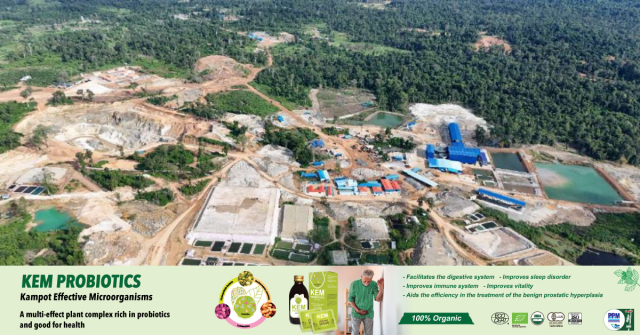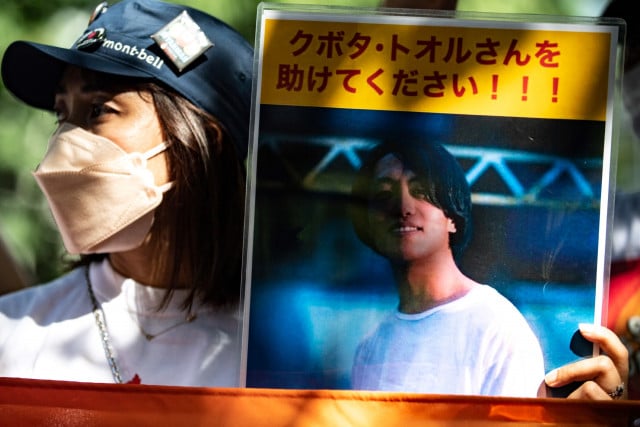Gold Mine is Environment Risk: Probe

- By Teng Yalirozy
- October 25, 2023 3:05 PM
PHNOM PENH – Investigators have warned of ecological hazards in the Prey Lang Wildlife Sanctuary as a result of gold mining by the Chinese company Late Cheng Mining Development.
The risks were set out in a report of nearly 100 pages by the Gold Mine Prey Lang Investigation Team.
The team conducts research for Bruno Manser Fond, a non-profit association based in Switzerland which works for the conservation of the tropical rainforests and respect for the rights of the rainforest dwellers.
Their report says gold mining in the sanctuary has grown from small-scale artisanal to large-scale commercial development in a 15,000-hectare concession area.
The company received the green light in September last year to conduct the $13 million project for 15 years and generate 300 jobs in Kampong Thom province’s Sandan district. The company has a production capacity of 180 kilos of gold per year and planned for a trial operation in August 2023.
However, the report, “Gold Mining in Prey Lang Wildlife Sanctuary, Cambodia Evolution from Small-Scale Artisanal to Large-Scale Commercial & Its Environmental and Human Impacts,” says the company has carried out commercial operation since August 2020 with only exploration permits.
The report says the company has caused significant environmental damage, including stream diversion, forest clearance and road construction, posing significant health and environmental risks without a public environmental impact assessment.
Following criticism and reported problems between the company and local people, the Mines Minister last month went down to the operation site.
It was found that the company had strictly followed the production and business plan, adhering to the technical and safety standards and the environment properly, without any accidents or leaks affecting people or the environment in the area.
The Ministry of Mines and Energy, local authorities, and companies met with locals near gold mining businesses to resolve issues, including compensation for damaged water pumps and policy changes for a farmer whose one hectare of land was affected by the entrance road of the company.
However, the report says that cyanide poses significant environmental and human health risks in the Late Cheng concession area, necessitating further documentation on “surface and groundwater contamination and exposure of mine workers and their families.”
Mercury use in Late Cheng concession area artisanal mining is undocumented, raising environmental and health risks, making it crucial to document its use or absence, the report says.
“A wastewater pond spill or cyanide leak could pose a very serious threat to the aquatic environment of these streams as well as to the humans who use the streams for food and water. Downstream impacts have not yet been assessed,” the report says.
Mine and Energy Ministry spokesperson Ung Dipola could not be reached for comment.
However, last year, he said, “based on technical and financial standards, the ministry has assessed the environmental and social impact and compared it with the value obtained through the economy. We decided to give the company a license to carry out a gold mining business.”
Cambodia expects to receive royalties of $250,000 a year when the company is fully operational in line with industry standards.















